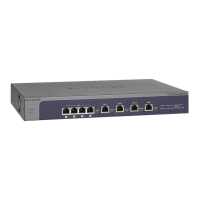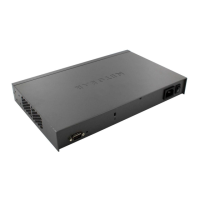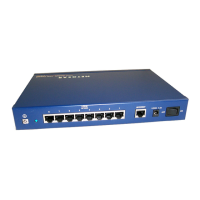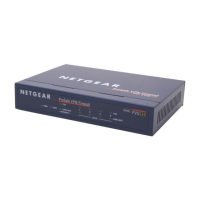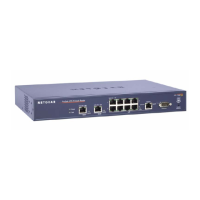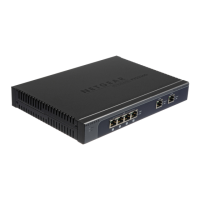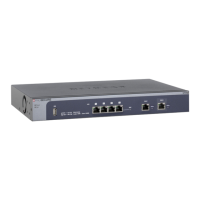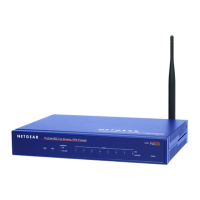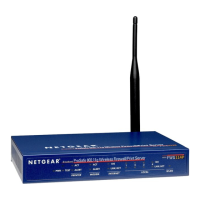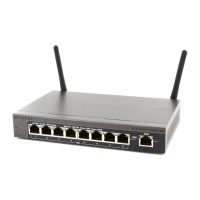55
3
3. LAN Configuration
This chapter describes how to configure the advanced LAN features of your VPN firewall. The
chapter contains the following sections:
• Manage Virtual LANs and DHCP Options
• Configure Multi-Home LAN IP Addresses on the Default VLAN
• Manage Groups and Hosts (LAN Groups)
• Configure and Enable the DMZ Port
• Manage Routing
Manage Virtual LANs and DHCP Options
A local area network (LAN) can generally be defined as a broadcast domain. Hubs, bridges,
or switches in the same physical segment or segments connect all endpoints. Endpoints can
communicate with each other without the need for a router. Routers connect LANs together,
routing the traffic to the appropriate port.
A virtual LAN (VLAN) is a local area network with a definition that maps workstations on
some basis other than geographic location (for example, by department, type of user, or
primary application). To enable traffic to flow between VLANs, traffic needs to go through a
router, just as if the VLANs were on two separate LANs.
A VLAN is a group of computers, servers, and other network resources that behave as if they
were connected to a single network segment—even though they might not be. For example,
all marketing personnel might be spread throughout a building. Yet if they are all assigned to
a single VLAN, they can share resources and bandwidth as if they were connected to the
same segment. The resources of other departments can be invisible to the marketing VLAN
members, accessible to all, or accessible only to specified individuals, depending on how the
IT manager has set up the VLANs.
VLANs have a number of advantages:
• They make it easy to set up network segmentation. Users who communicate most
frequently with each other can be grouped into common VLANs, regardless of physical
location. Each group’s traffic is contained largely within the VLAN, reducing extraneous
traffic and improving the efficiency of the whole network.
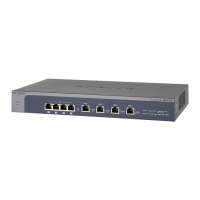
